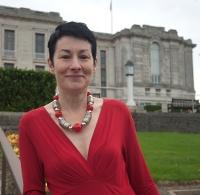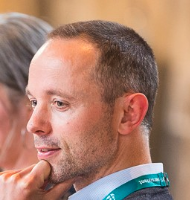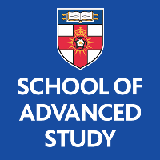Blog
Unless otherwise stated, content is shared under CC-BY-NC Licence
Breaking down Barriers in Wales Through the Iffy Tiff
Sally McInnes is Chair of the Archives and Records Management Digital Preservation Group at the National Library of Wales
In Wales, we have been working for many years to break down barriers to digital preservation through working collaboratively to increase capacity and skills. The publication of the National Digital Preservation Policy and accompanying Technical Appendix, on Digital Preservation Day in 2017, aimed at ensuring digital resources of enduring value would be selected for preservation and remain authentic and accessible in the future and to raise awareness of the importance of digital preservation for stakeholders and decision makers. The policy framework is supported by the development of a technical solution, which links Archivematica, Fedora and the National Library of Wales’s Digital Archive, whilst providing access to content through the discovery systems which are managed by the partners.
Building relationships and building collections
Rachel MacGregor is Digital Preservation Officer at the Modern Records Centre, University of Warwick
Making connections with people is always important when working in digital preservation – without connecting with our creators and our users (potential and actual) there is nothing to preserve and no one to preserve it for. We can sometimes get too focussed on our digital collections as a bunch of bits and bytes but in very real terms what we have is stories and experiences, told through a dizzying variety of file formats, content types and platforms. It’s our job to make sure those stories are preserved – and the context around them – to make them meaningful and accessible for future generations.
New Models for Preservation: Photogrammetry at the University of St Andrews Libraries and Museums
Sean Rippington is Digital Archives and Copyright Manager at the University of St Andrews
Photogrammetry – taking overlapping photographs of an object and converting them into 3D digital models – has become business as usual for the University of St Andrews Libraries and Museums. Driven by the push to provide more, different, and better types of online access to our collections for teaching and learning during the pandemic, we now have over 170 examples on our IIIF-based Collections site. Many of the models have already been used in our Exhibit teaching and engagement tool, developed to provide new, curated, almost tactile encounters with digital objects. Some of our favourites include:
From an acorn (bit) a mighty oak forest (repository) grows: Developing digital preservation capability in Nottingham
Jaana Pinnick is Grants Manager and Research Data and Digital Preservation Manager at the British Geological Survey
A.K.A. a brief timeline of the digital preservation journey at British Geological Survey (BGS) and National Geoscience Data Centre (NGDC) over the last few years
Around this time in 2016, the initial thoughts I had had to explore digital continuity and preservation needs at BGS were starting to develop further. I had finished my MSc thesis on “Exploring digital preservation requirements: A case study from the National Geoscience Data Centre (NGDC)” which led to my first peer-reviewed article being published in the Records Management Journal. During my studies I had discovered that our parent body UKRI (then still RCUK) was a member of the DPC, so I approached Juan Bicarregui, Chair of the DPC who works at the Science & Technology Facilities Council (STFC) to ask if I could join. I soon got in the habit of attending DPC events, meeting William, Sarah, Paul and others, not forgetting other digital preservationists from around the world and learning a lot from them. Their jobs sounded fascinating so I took a Post-Graduate Diploma in Digital Preservation at the University of Aberystwyth with Sarah Higgins, and learned some more. But what next?
The WDPD2021 file format karaoke!
World Digital Preservation Day is a chance to talk about our digital preservation challenges and some of the progress we have made, both individually, and as a community. Of course, it is also a chance for the community to come together and have a bit of fun in the name of awareness raising.
One of the things I enjoy most about World Digital Preservation Day is the musical contributions. There is no doubt there is some talent in our community of digital preservationists.
But this year I wondered what would happen if we invited our file formats to take to the floor and have a go at singing. As you can see, they embraced this challenge with great enthusiasm.
Deletion Rebellion: The BitList in 2021
There’s a paradox about World Digital Preservation Day this year. 2021 might well be marked as the year of the great deletion. Barely a day has passed without a news story about some curious deletion or obfuscation which has inhibited prosecution, denied transparency, disrupted science or defeated accountability. And yet, the digital preservation community has grown in number and in skills over this same period. What’s going on? How can both of these statements be true at the same time? The BitList provides something of an answer: that capability is ahead of policy.
FAIR today, FAIR tomorrow and FAIR forever
Matthew Addis is Chief Technology Officer at Arkivum.
The theme of this year’s World Digital Preservation Day is ‘Breaking Down Barriers’. A great example is recent work on how digital preservation can help ensure scientific data will remain accessible and usable for decades to come. The European Open Science Cloud (EOSC) is bringing together the communities of scientific research and digital preservation to break down the barriers that currently jeopardise the long-term access to hugely important scientific datasets and results.
This is happening both at a strategic level, for example through EOSC’s working group on sustainability that includes a task force on long-term digital preservation (LTDP), and on a very practical and technical level, for example through the ARCHIVER project that is developing new LTDP services for EOSC. Arkivum has been privileged to work in ARCHIVER to find new ways to do cost-effective, scalable, and environmentally friendly digital preservation at scale (more on that below).
Applying for CoreTrustSeal: Part 1
Lee Hibberd is Digital Preservation Manager at the National Library of Scotland.
For many years the National Library of Scotland has talked about joining the great and the good and certifying our digital preservation and access activities against CoreTrustSeal (https://www.coretrustseal.org/). If you’re unfamiliar with Core Trust Seal it is a certification scheme for trustworthy data repositories. Sixteen core criteria are assessed and it's up to you to provide evidence of how your institution satisfies each of them.
Part 1 of this blog is an account of our positive experience up to the point of submitting our application for review in summer 2021. Part 2 will cover “what happened next” and some of the challenges we faced along the way. This will come shortly after gaining the seal. We’re not being presumptuous here – we are simply committed to undertaking any additional work we need to do to demonstrate our competence to the reviewers. The point of the application is not to gain a shiny badge but to improve what we do, and this sentiment is well shared in blogs by other DPC members (see box below with some links).
Saved by digital preservation
Kunika Kono is Technical Lead for Digital Humanities at the Digital Humanities Research Hub, School of Advance Study, University of London
Over the last year, many universities in the UK faced organisational restructure, departmental closures and job cuts. The School of Advanced Study and its institutes were no exception, and in February 2021, the Digital & Publishing department in the Institute of Historical Research (IHR), where I worked, effectively closed.
On Gardening and Digital Preservation… A year of reflection and better engagement
Garth Stewart is Head of Digital Records Unit at the National Records of Scotland
As a practical discipline, tending to a garden feels quite similar to digital preservation: it can never be considered ‘done’. Whatever the season, wherever you are in the world, there’s always something to do; whether it’s the laying of a new lawn (or the installation of a new piece of digital storage infrastructure), the sowing of a new flower bed (or the ingest of new image files), applying fertiliser (or using characterisation tools to enrich metadata), or the odd bit of dead-heading (or the rare act of de-accessioning). Gardening - and digital preservation - are engrossing, progressive, life-long activities.



















































































































































